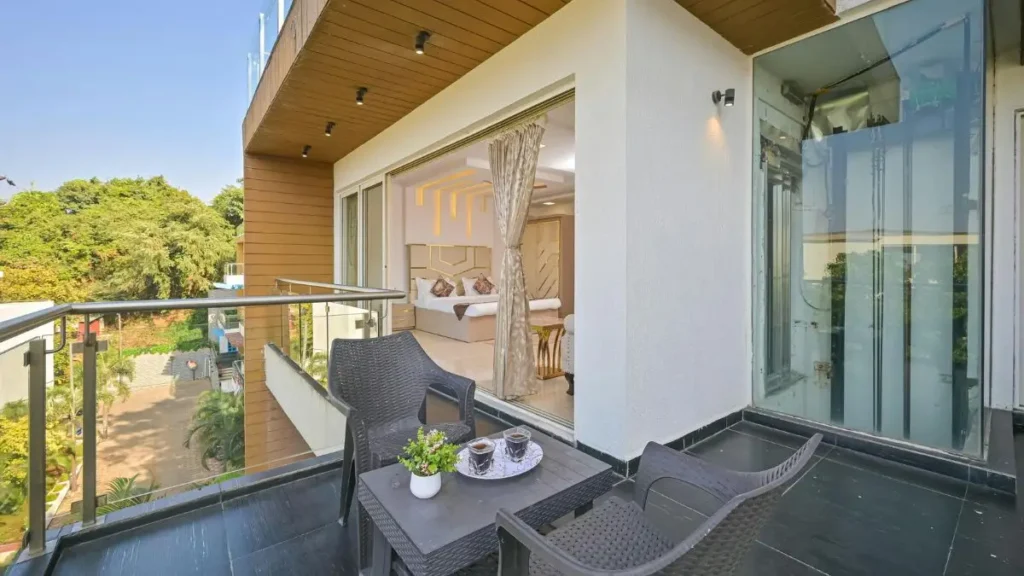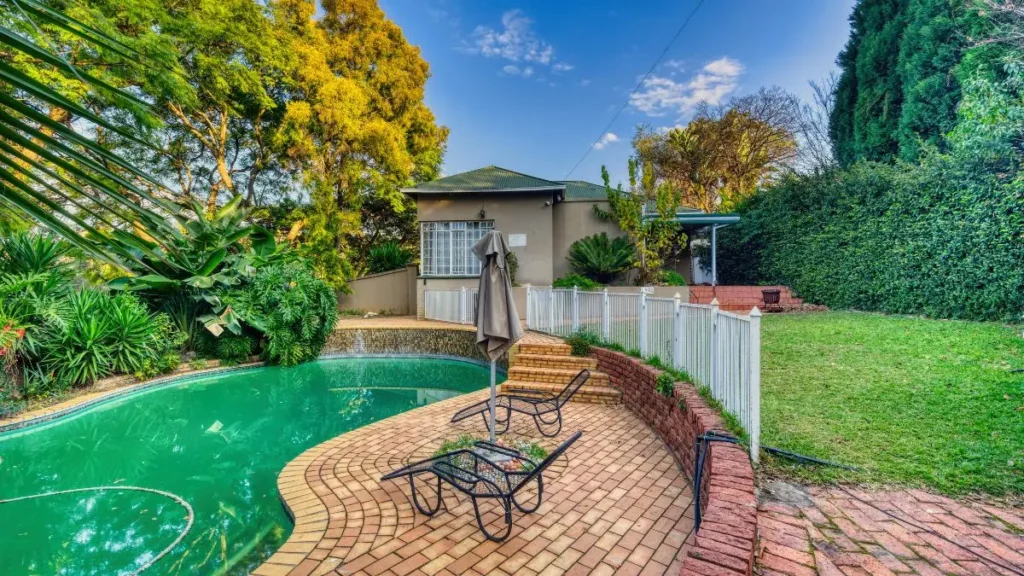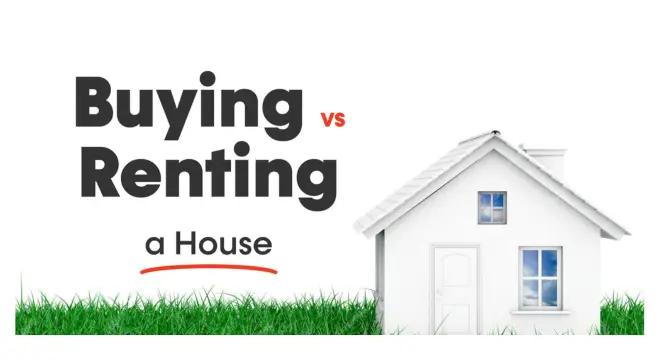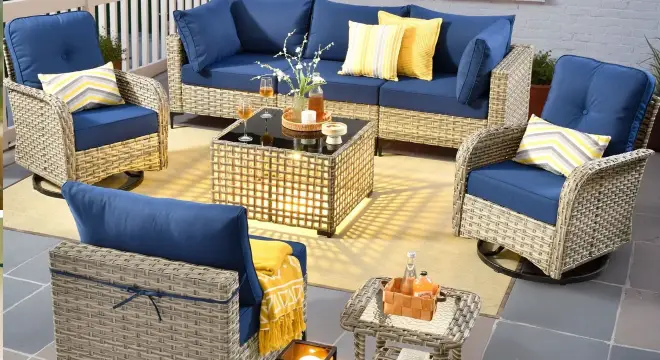Troye Sivan’s Midcentury Los Angeles Home Hits the Market for $2.545 Million
When I saw that Troye Sivan quietly put his midcentury Los Angeles home on the market for $2.545 million, it immediately made sense. This isn’t just another celebrity listing—it’s one of those homes that tells you a lot about the person who lived there.
If you’ve followed Troye even a little, you know he has a strong eye for design. So when someone like him decides to sell a 1958 Hollywood Hills property he’s held onto since 2017, I find myself wondering why now, what’s changed, and what’s the real story behind the listing.
You and I both know that celebrity real estate can feel repetitive online—same facts, same angle, quick rewrite. But this one is different. It’s personal, it’s architectural, and it comes with a history: the original midcentury shell, Troye’s warm interior reimagining, and a rental chapter where the home pulled nearly $18,000 a month.
So let’s break down what he’s actually selling here—and why this home matters beyond the price tag.
If you were in Troye’s place, would you sell a home like this—or hang on to it as a long-term investment?
Ownership History & Price Journey

The first thing I always look at in a celebrity home listing is the ownership trail—because it usually tells you more than the listing itself. And in Troye Sivan’s case, the story is pretty straightforward.
According to Mansion Global, Troye bought this Hollywood Hills home back in 2017 for about $2.15 million, using a trust. That alone says a lot—when artists lock a home under a trust, it’s usually about privacy, long-term planning, or simply smart structuring.
What’s interesting is the rental chapter. Troye tested the waters at the end of 2022, putting the home up for nearly $17,950 a month. That’s a strong rental number for a midcentury property, which tells me the design, location, and privacy were all working in his favor. But by March 2023, he pulled it off the rental market entirely.
You and I can only guess why—maybe the tenant pool didn’t match the home’s energy, maybe he wasn’t ready to let strangers live in a space he designed with such intention, or maybe he was already thinking about selling down the line.
Either way, this sale feels less like a sudden move and more like the final step in a long plan.
The Home’s Architecture & Midcentury Pedigree
I have a soft spot for midcentury homes, and if you’re reading this, you probably do too. There’s something timeless about a property built in 1958—especially in the canyons below Mulholland Drive, where the streets are quiet and the architecture still echoes L.A.’s golden era.
Troye’s home stays true to that vibe. The exterior is clean and understated, with a white façade and a dark arched front door that gives it just enough personality without shouting for attention. Even the garage door follows the same tone, which tells you the design choices were intentional, not trendy.
And because the home sits on a cul-de-sac, it has that extra layer of seclusion most Hollywood Hills buyers crave. You don’t get drive-through traffic. You don’t get noise bleeding in from busy streets. You just get quiet, sky, and canyon air.
Homes from this era can feel cold or overly rigid if they aren’t handled well—but Troye clearly understood the balance between preserving the past and making it his own.
It’s similar to how Genevieve Gorder approached her Manhattan duplex—every update felt intentional and design-led rather than trend-driven.
Interior: A Warm, Reimagined Midcentury Space
If there’s one thing that stands out the moment you step inside, it’s the warmth. The interiors have been “reimagined,” as the listing puts it—and honestly, that’s the right word. Troye didn’t try to turn this into a futuristic bachelor pad or a glossy modern box. He leaned into the home’s history.
Warm wood tones run throughout the space. They give the home a grounded, lived-in feeling instead of the cold minimalism you see in so many celebrity properties. And it works beautifully with the midcentury bones—clean lines, open rooms, and natural textures.
The listing agent, Jenna Cooper, describes the house as blending “architectural integrity and emotional warmth.” I actually love that phrasing because it captures what a lot of renovated midcentury homes miss. You can update a house without stripping out its soul, and this one proves it.
If you’ve ever tried mixing vintage architecture with modern comforts, you know it isn’t easy. But this home manages to feel calm, lived-in, and deeply personal—exactly the kind of place an artist would recharge in.
The Main Living Area: Light, Flow, and Fireplaces
The heart of the home is the main living space, and you can tell Troye spent time getting it right. This is where the flow really shines.
The open kitchen transitions into a sitting area anchored by a large fireplace, which immediately gives the room the emotional warmth midcentury homes sometimes struggle to deliver. And the near floor-to-ceiling windows pull the outside in, so you get that perfect indoor–outdoor blend that L.A. homes are known for.
Right between the kitchen and the living space, there’s room for a dining table—nothing oversized or showroom-like, just a practical spot that fits naturally into the layout.
When I look at spaces like this, I think about the kind of day-to-day life they’re designed for. This doesn’t feel like a staged celebrity home built for Instagram photos. It feels like a place where someone actually cooked, read, wrote music, and spent slow mornings in sunlight.
If you’ve ever lived in an open-plan home, you know how much the small details matter—the placement of windows, how the kitchen “talks” to the living room, where the natural light lands. This space seems to have all those pieces lined up.
By the way, I often share quick home-layout ideas and real estate updates on a WhatsApp broadcast I follow—this kind of warm, open-floor design comes up a lot there.
Bedrooms, Bathrooms & the Upper-Level Retreat
Upstairs is where the home starts feeling even more personal. The primary suite isn’t massive in a flashy way—it’s comfortable in a thoughtful way. You get a walk-in closet, another fireplace, and a bathroom with a sunken soaking tub that feels straight out of a 1960s film, but with modern updates.
That tub alone tells me Troye values slow living. It’s the kind of feature you choose when you want a home to feel like a retreat, not just a crash pad.
The second floor also includes a skylit den with floor-to-ceiling bookshelves. And if you’re someone who works creatively—or you just love having a dedicated nook for reading or thinking—you already know how rare and valuable a space like that is.
Jenna Cooper summed it up perfectly when she said every part of the home was designed “to invite calm and creativity.” And honestly, that’s exactly how it reads: a house that doesn’t overwhelm you, but quietly supports whatever you’re trying to create.
Outdoor Living: The Real Midcentury Lifestyle

Whenever I look at a midcentury home, the outdoor space tells me whether the renovation was done with heart or just for resale. Troye’s place clearly leans toward the first.
The backyard has a pool, a patio, and a fire pit tucked into a seating area that feels both simple and intentional. Nothing feels oversized or flashy—it’s the kind of outdoor setup where you can imagine slow evenings, quiet hangs with friends, or even just using the space as a reset between long creative days.
What I like most is how naturally the indoors spill out into the backyard. Those big windows and open layout make the outdoor space feel like an extension of the living room, not a separate zone. And in a city like L.A., that indoor–outdoor connection isn’t a luxury; it’s a lifestyle.
If you’ve ever lived in a home with a patio or pool that actually gets used, you know how much it changes the rhythm of daily life. This backyard seems built for that—nothing complicated, just calm, light, and space to breathe.
I felt the same design clarity when I looked at Douglas Friedman’s Texas estate—another space where architecture and personality work together instead of competing.
Why This Listing Stands Out in Today’s L.A. Market?
The L.A. luxury market is crowded. New builds everywhere, glass boxes, spec homes, and a parade of celebrity listings that all feel like clones. That’s why this home stands out—it isn’t pretending to be something it’s not.
A well-kept 1958 midcentury home with architectural integrity is already rare. Add the location—Hollywood Hills, canyon-side, cul-de-sac—and you’ve got a property that appeals to a very specific kind of buyer: someone who cares about design more than hype.
Most midcentury homes in the Hills either get over-modernized or stripped of their identity. Troye’s home strikes that middle ground: updated enough to feel fresh, but not so heavily renovated that it loses the warmth of the era.
And then there’s the celebrity layer. Some buyers ignore it. Others consider it a bonus. But whether you’re a fan or not, Troye brings cultural value—he’s a musician, an actor, and most importantly, someone who actually lived with design intention, not just money.
In a market overflowing with properties that feel manufactured, this home feels personal. And that’s exactly why it will get attention.
Why He Might Be Selling Now?
Troye hasn’t commented on the sale, which honestly leaves room for thoughtful speculation. And I try not to jump to dramatic stories—most real estate decisions are practical, not emotional.
One possibility is that he’s simply shifting his base. Troye has strong ties to Australia, especially Melbourne, where he’s already shown off another beautifully designed home. Managing properties on two continents isn’t easy unless you have a team dedicated to it.
Another angle: he tested the rental market, pulled back, then waited nearly a year before listing. That feels deliberate. You and I know when artists hit certain phases of growth, they reevaluate their spaces. Maybe he wanted to lighten the load. Maybe the house didn’t match his current pace. Or maybe he’s eyeing a different kind of architecture.
There’s also the financial perspective. Buying at $2.15M, selling at $2.545M, plus rental income—it’s a clean, respectable move, even in an unpredictable market.
Whatever the reason, the timing doesn’t feel rushed. It feels like a planned exit from a home that served him well.
It actually reminds me of how Jessi and Jordan Ngatikaura recently listed their Utah home during a major transition—stories like theirs often show how personal life shifts shape real estate moves.
Design Takeaways You Can Use in Your Own Home
The best part about looking at homes like this isn’t the celebrity angle—it’s the design ideas you can actually borrow.
For starters, the warm wood tones throughout the house are a reminder that you don’t need flashy materials to create comfort. Wood instantly grounds a space. If your room feels cold or empty, adding even one wooden element—sideboard, bookshelf, paneling—can shift the entire mood.
The skylit den upstairs is another lesson. Natural light can turn an ordinary room into a creative retreat. Even if you don’t have a skylight, adding upward-facing lighting or clearing a window can change how a room feels.
Then there’s the indoor–outdoor blend. You don’t need a Hollywood Hills view to apply this. Just positioning seating near windows, adding plants, or using lighter curtains nudges the indoors closer to nature.
And I have to mention the sunken tub. It’s a subtle reminder that self-care features aren’t luxuries—they’re design choices that support the way you want to live. If you spend real time in your bathroom, make one choice that feels indulgent, even if it’s small.
Every part of Troye’s home feels intentional. Not styled to impress—styled to live in. And that’s something anyone can take inspiration from.
Final Thoughts: A Home That Reflects the Person, Not the Price
When I step back and look at the entire picture, this house doesn’t read like a celebrity flex. It reads like someone who genuinely cared about where he lived. Every corner feels lived-in, not staged. Every design choice feels thoughtful, not trendy. And honestly, that’s rare.
Midcentury homes can sometimes feel like museums—beautiful, but stiff. Troye’s version keeps the history but lets real life flow through it. There’s warmth, softness, and personality tucked into every room. You can tell it wasn’t renovated for Instagram. It was shaped around someone’s everyday rhythms.
And maybe that’s the quiet charm of this listing. It doesn’t scream. It doesn’t sell a fantasy. It simply shows what a well-loved home looks like when someone decides to pass it on to the next person.
Whether you’re a design lover, a Troye fan, or just someone who appreciates a home with soul, this listing gives you a lot more than glossy real estate photos ever could.
If you like exploring homes that balance personality and design like this one, you’ll find more standout celebrity spaces in our Real Estate & Homeownership section—worth checking if you’re hunting ideas.
Disclaimer: This article is based on publicly available information, property listings, and verified reporting from trusted sources. Details about pricing, availability, and property features may change over time. This content is for informational purposes only and should not be taken as real estate or financial advice.


